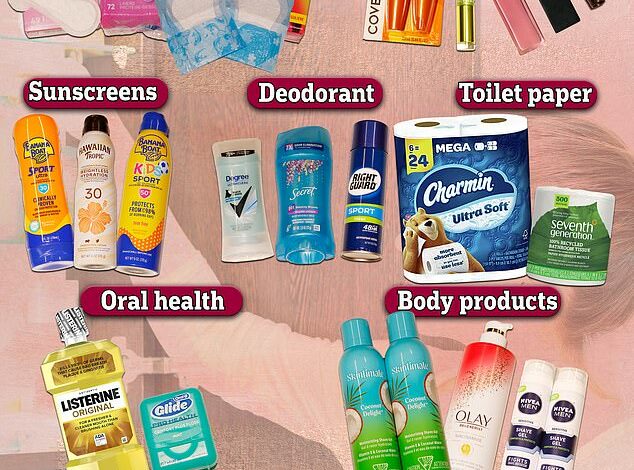You are using sanitary towels incorrectly! Social media is going wild over a genius hack for feminine hygiene


Research shows that they are the feminine hygiene product of choice for women who have periods.
But according to a video shared on social media that has been viewed 20 million times so far, women may be making a critical mistake in securing sanitary pads.
The clip, posted by someone called Hot girl teeh on X, shows a woman sticking the product onto a pair of underwear using an intriguing hack.
Instead of throwing away the paper rectangle that holds the sticky ‘wings’ in place – as usual – the woman uses it to hold the towel firmly to the material of the panties.
She does this by turning the underwear upside down and placing the paper over the gusset before gluing the wings to it, rather than directly to the fabric.
This is said to prevent the wings from sticking together and damaging the underwear.
Thousands of
One woman said, “Wait, how was I supposed to put it on like that? And here I had problems with it not sticking or the wings sticking to my legs.’
It is estimated that around 15 million women in Britain are of menstrual age, with the majority of girls having their period by the age of 12.5.
According to Australian researcher Dr. Lauren Rosewarne, about 62 percent of women use sanitary pads when it is their time of the month, while 42 percent use tampons.
Dr. Rosewarne, who lectures on sexuality, gender, feminism and popular culture at the University of Melbourne, says there are many reasons for the preference for sanitary pads over tampons.
She believes women are averse to “getting closer to the uterine lining,” which explains why devices like Mooncups “haven’t gone mainstream yet,” she said.
Another reason why tampon use is low is fear-mongering surrounding toxic shock syndrome – a rare but life-threatening condition caused by a bacterial infection.
Dr. Rosewarne wrote in The Conversation: ‘Dramatically exaggerated fears of TSS still make some women reluctant to use tampons.
‘Although it is a medical condition that is easily avoidable – for example by not treating a tampon as a permanent resident – the specter of Death by Tampon still haunts us.
‘An extension of this are the vaguer fears that tampons will make you sick.

US consumer watchdog group Mamavation and the Environmental Working Group suggested that tampons, along with other hygiene products, may contain harmful perfluoroalkyl substances, or PFAS. Called “forever chemicals,” they can linger in the environment for hundreds of years and have been linked to everything from cancer to infertility
‘One version – popularized by the fountain of all high-quality urban legends: the world wide web – claims they’re packed with asbestos, which makes you bleed more and therefore buy more tampons.’
In July, a team of American researchers discovered that toxic metals could be lurking in tampons sold in Britain.
Tests by scientists from several American universities on 30 products purchased in New York, Athens and London found that some contained dangerous levels of arsenic, chromium and even lead.
And all 16 metals tested were detected in at least one tampon.
The experts said there were several ways the metals could end up in the tampons, including contamination of cotton plants used to manufacture tampons.
They can also potentially be added during production processes as brighteners, antibacterial agents or through cross-contamination from other factory processes.
However, British experts said the study results do not prove that the metals can leak into the vagina and have harmful effects on the body.
Professor Atholl Johnston, Emeritus Professor of Clinical Pharmacology at Queen Mary, University of London, told MailOnline: ‘Prior to analysis, the tampons were cut into pieces and then the researchers added 2ml of nitric acid 67-70 percent (HNO3) to each sample and the tampons were predigested overnight at room temperature before microwave-assisted acid digestion.
“Hardly a comparable environment to the average vagina.”
He added: ‘If I saw a woman using a tampon I wouldn’t panic at this stage. There is no evidence that the metals would enter the menstrual blood and be absorbed by the body.’




